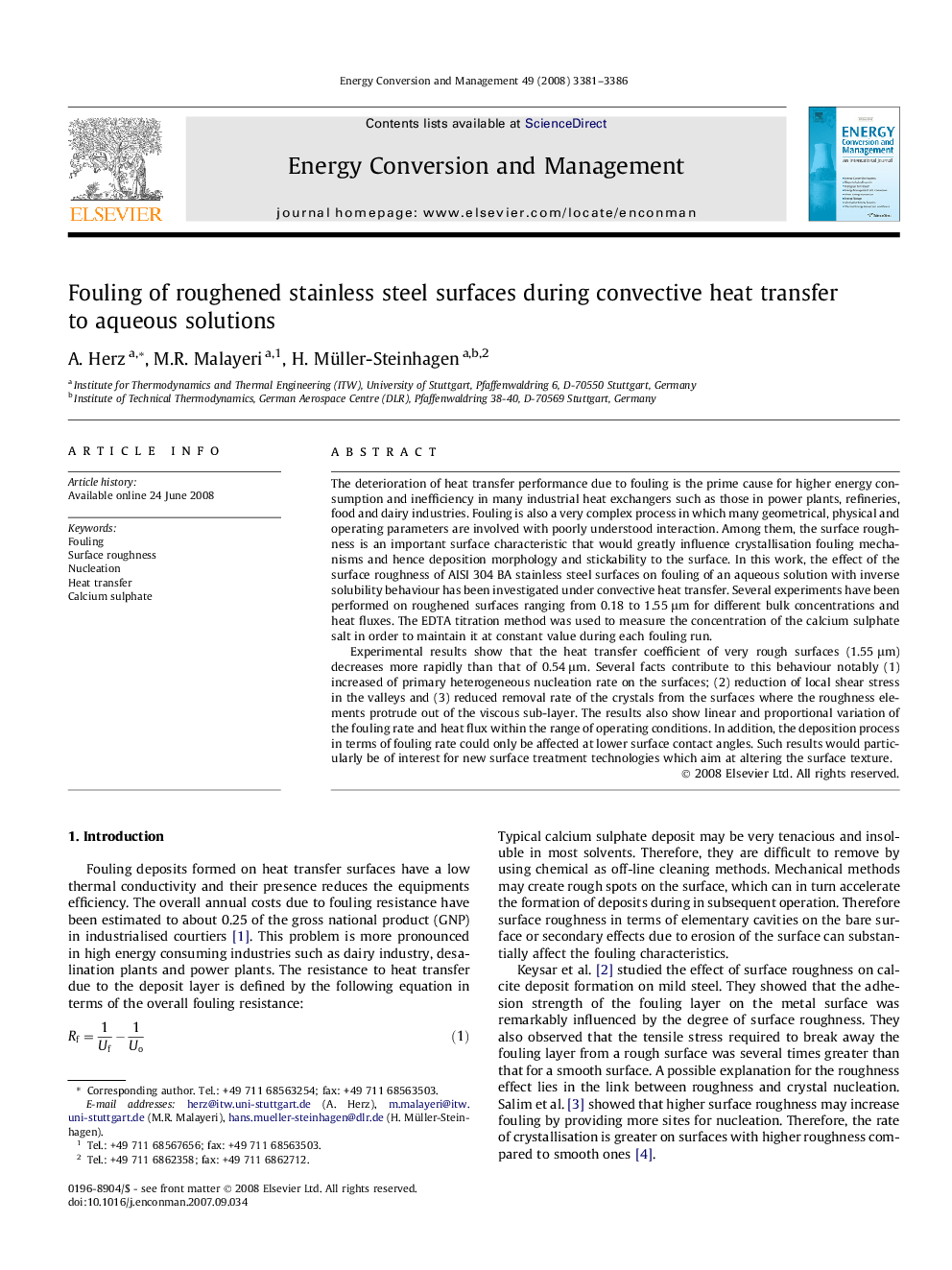| کد مقاله | کد نشریه | سال انتشار | مقاله انگلیسی | نسخه تمام متن |
|---|---|---|---|---|
| 766486 | 897103 | 2008 | 6 صفحه PDF | دانلود رایگان |

The deterioration of heat transfer performance due to fouling is the prime cause for higher energy consumption and inefficiency in many industrial heat exchangers such as those in power plants, refineries, food and dairy industries. Fouling is also a very complex process in which many geometrical, physical and operating parameters are involved with poorly understood interaction. Among them, the surface roughness is an important surface characteristic that would greatly influence crystallisation fouling mechanisms and hence deposition morphology and stickability to the surface. In this work, the effect of the surface roughness of AISI 304 BA stainless steel surfaces on fouling of an aqueous solution with inverse solubility behaviour has been investigated under convective heat transfer. Several experiments have been performed on roughened surfaces ranging from 0.18 to 1.55 μm for different bulk concentrations and heat fluxes. The EDTA titration method was used to measure the concentration of the calcium sulphate salt in order to maintain it at constant value during each fouling run.Experimental results show that the heat transfer coefficient of very rough surfaces (1.55 μm) decreases more rapidly than that of 0.54 μm. Several facts contribute to this behaviour notably (1) increased of primary heterogeneous nucleation rate on the surfaces; (2) reduction of local shear stress in the valleys and (3) reduced removal rate of the crystals from the surfaces where the roughness elements protrude out of the viscous sub-layer. The results also show linear and proportional variation of the fouling rate and heat flux within the range of operating conditions. In addition, the deposition process in terms of fouling rate could only be affected at lower surface contact angles. Such results would particularly be of interest for new surface treatment technologies which aim at altering the surface texture.
Journal: Energy Conversion and Management - Volume 49, Issue 11, November 2008, Pages 3381–3386